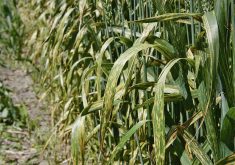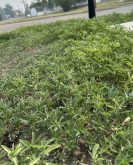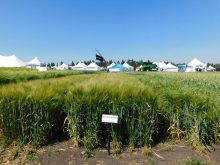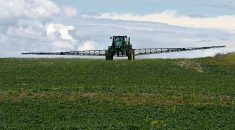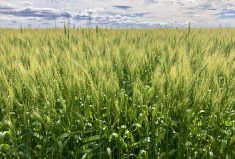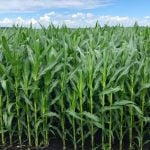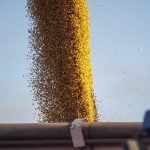Malt barley producers battling secondary growth in the fall may soon be able to add glyphosate to their arsenal, thanks to a federal research study underway across the Prairies.
These preliminary findings are part of a larger study looking at agronomic practices to improve malt barley quality and yield, said federal research scientist John O’Donovan.
“Farmers grow malting varieties in the hope of getting malting quality, but that doesn’t happen a lot of the time,” said O’Donovan at the Lacombe Field Day in late July.
Read Also
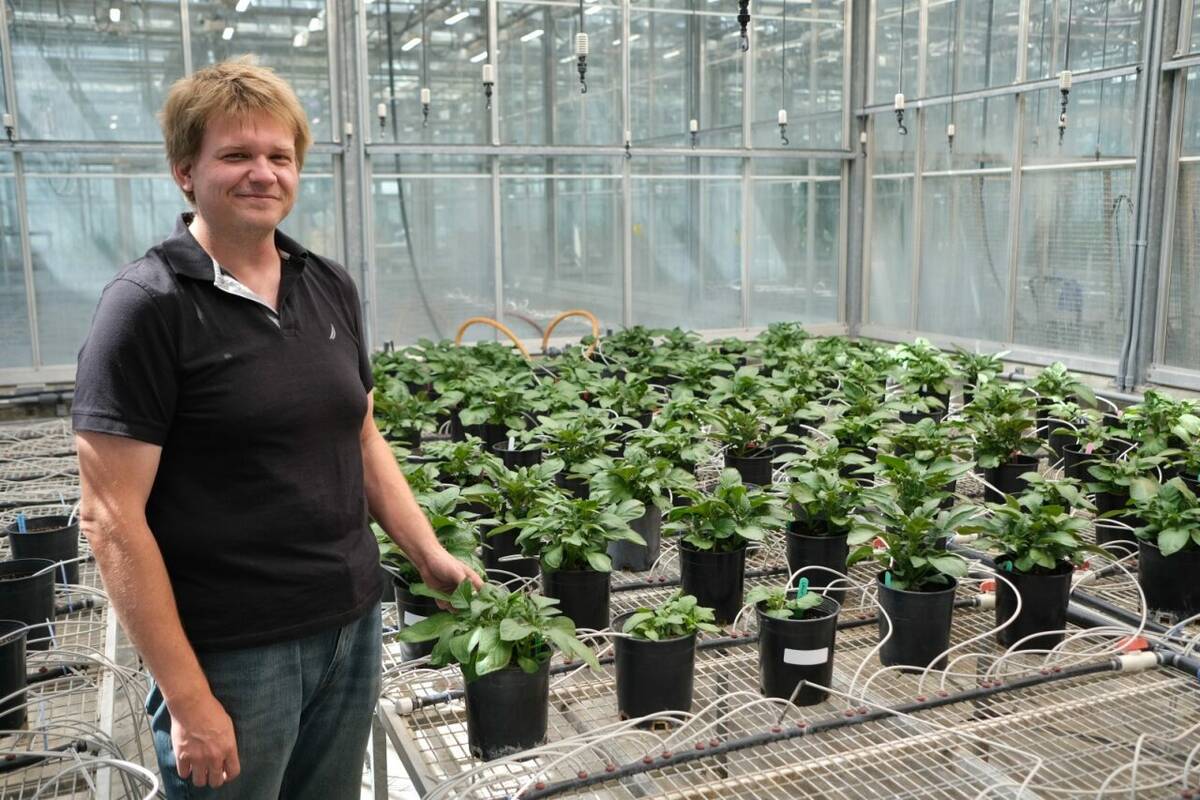
Hail research hopes to benefit potato growers
Alberta research scientist measures hail storm and heat dome affects on potato crops
“Twenty-five per cent or less annually is accepted for malting. The rest goes for feed at a lower premium.”
During the course of the study, O’Donovan’s team has developed recommendations for everything from seeding rate to rotational benefits of malt barley following pea. But “there are a number of outstanding issues,” said O’Donovan, and secondary growth in the fall is a key one.
“A way of overcoming that problem is to apply a pre-harvest glyphosate application as a dry-down,” he said.
“But the maltsters are not gung-ho about that, and most of the time, they will not accept barley that has been treated with a pre-harvest glyphosate application.”
There are valid reasons for that, he said. The first is maximum residue limits, which can impact international malt barley trade.
- More from the Alberta Farmer Express: Malt barley facing stiff competition from GM crops
“The threshold, I believe, is around 20 parts per million. If barley exceeds that threshold, it can be rejected.”
Pre-harvest glyphosate may also affect germination, another consideration for maltsters. “Germination is crucial during the malting process.”
Using two popular varieties — AC Metcalfe and CDC Meredith — O’Donovan tested two glyphosate rates at three stages of application: the soft-dough stage (where moisture levels are between 30 to 40 per cent), the hard-dough, or recommended, stage (where moisture levels are between 25 to 30 per cent), and at maturity (where moisture levels are under 20 per cent).
Last year’s results, he said, “were quite interesting.”
“If the glyphosate was applied at the right stage and the right rate, there was no effect at all on germination, and the residue levels were quite a bit below the threshold level,” he said.
At several locations, including Lacombe and Lethbridge, O’Donovan saw around a 10 per cent increase in yield when glyphosate was applied at the right stage and right rate.
When glyphosate was applied at the soft-dough stage, germination was affected, but “not to the extent that I thought it might be,” he said, adding that in some locations, residue levels rose above threshold levels and yields were reduced.
The preliminary results are promising, said O’Donovan, but the Canadian Grain Commission will be looking at the effects of glyphosate on other malt barley quality factors.
“We’re hoping at the end of the three or four years to have the risks and benefits worked out,” he said.
“Then it’s up to the maltsters and the industry to make a decision as to whether it will allow the glyphosate to be applied pre-harvest.”



